- 路 Microwave
- 路 Atmospheric Pressure Microwave 路 Pressure Microwave 路 Parallel Microwave
- 路 Ultrasonic 路Low Temperature Ultrasound
- 路 Ultraviolet Light
- 路 Microwave Heating 路 Atmospheric Pressure Synthesis 路 Atmospheric Pressure Catalysis 路 Atmospheric Pressure Extraction
- 路 Sample Preparation 路 Microwave Digestion
- 路 Soil Digestion 路 High Pressure Synthesis
- 路 Solid Phase Synthesis
- 路 Organic Synthesis
- 路 Ionic Liquid Synthesis
- 路 Degradation Of Natural Organic Matter
- 路 Natural Product Extraction / Purification
河北祥鹄科学仪器有限公司
112 Transesterification of Soybean Oil by Using the Synergistic Microwave-Ultrasonic Irradiation
This paper, written by researchers from Zhejiang University of Technology and others, discusses Transesterification of Soybean Oil by Using the Synergistic Microwave-Ultrasonic Irradiation. The paper is published in an important journal < Ultrasonics Sonochemistry >. IF:6.012.
In recent years, the research work of microwave chemical instrument used in the synthesis of materials has become a hot direction of scientific research, which has been paid great attention to by many scholars!
Microwave and ultrasound have been demonstrated to be outstanding process intensification techniques for transesterification of oil. According to their mechanisms, simultaneous effects can surely bring about better enhancement than sole microwave or ultrasound. Therefore, this study aimed to investigate the important factors and their suitable levels in 54 the KOH-catalyzed transesterification of soybean oil with methanol by using synergistic assistance of microwave-ultrasound (CAMU). The feasibility of application of CAMU in transesterification of oil was demonstrated. When the dosage of methanol, soybean oil and KOH were 15.4 g, 34.7 g (with methanol-to-oil molar ratio of 12:1) and 1 g, respectively, and the microwave power, ultrasonic power, ultrasonic mode, reaction temperature and reaction time were 700 W, 800 W, 1:0, 65°C and 6 min, respectively, the transesterification reached 98.0% of yield, being the highest yield among all the results obtained; while by using 600 W of microwave plus stirring instead of CAMU, only 57.4% of yield could be obtained. Compared with other reaction techniques, the transesterification by applying novel CAMU was found to have remarkable advantages. Furthermore, by monitoring the variation of real-time temperature and microwave power during transesterification reactions with different microwave operation time and by taking comparison of the corresponding yield, it was demonstrated that the main reason for the acceleration of microwave-assisted transesterification was the polarization and further activation of reactants caused by microwave irradiation, but not the factor of fast heating.
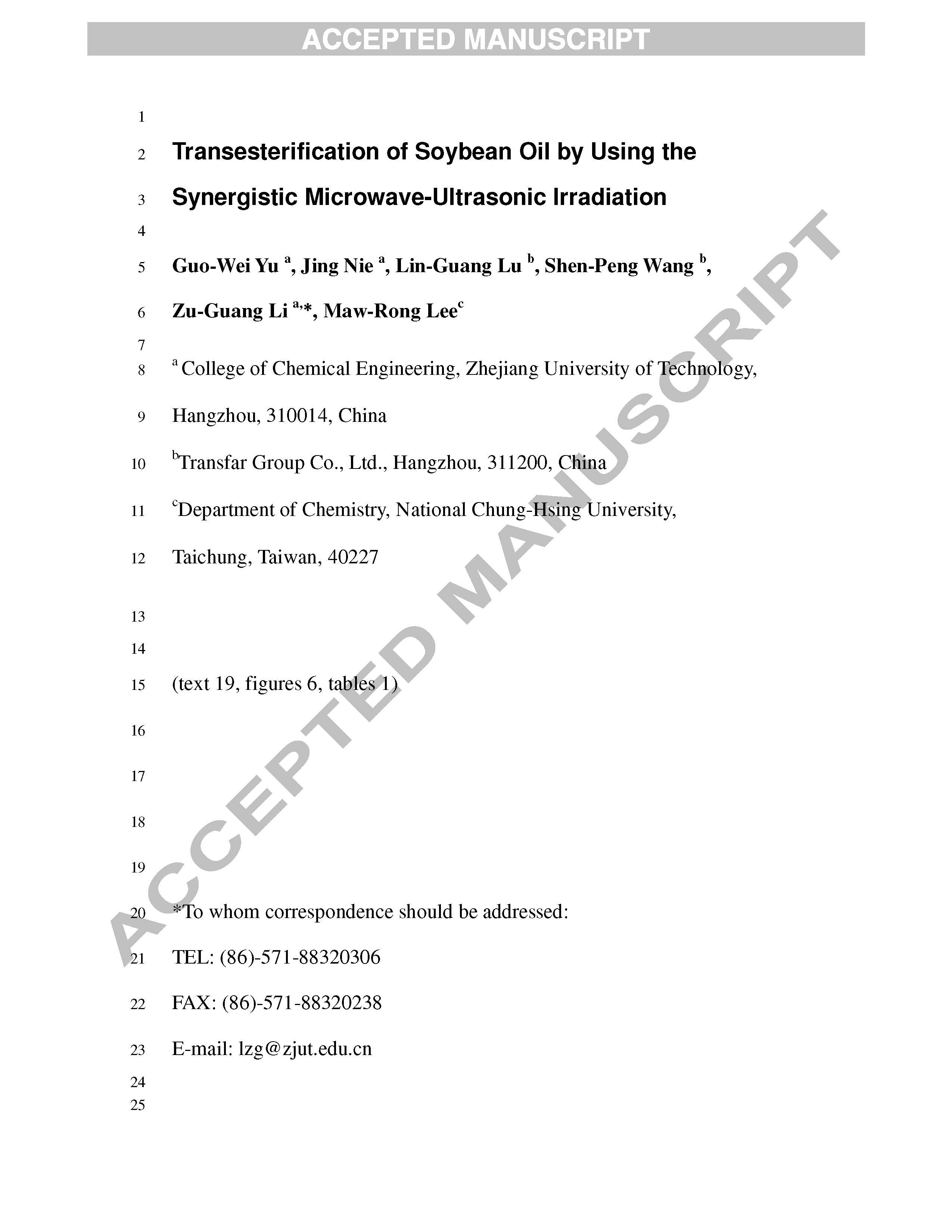
Fig.1/4↑
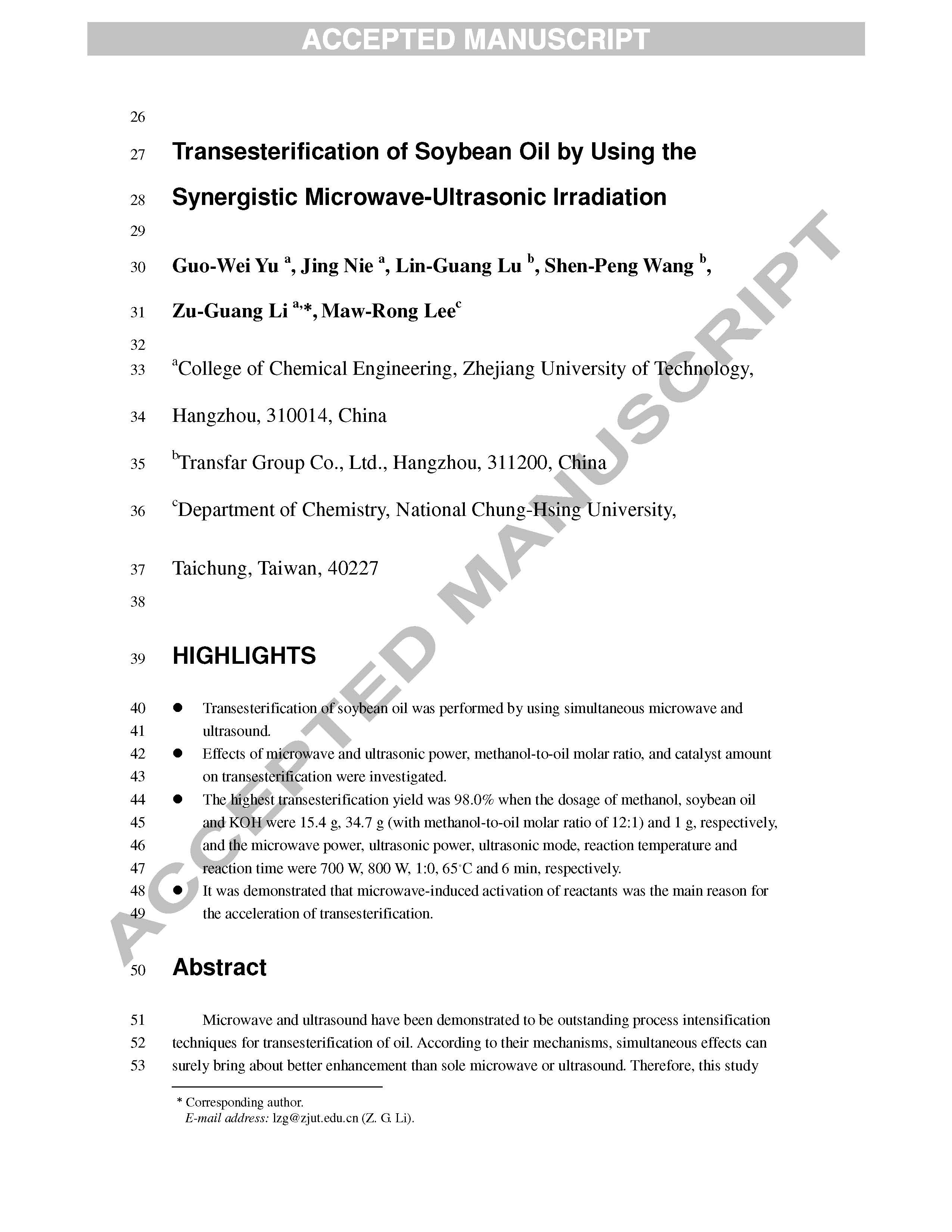
Fig.2/4↑
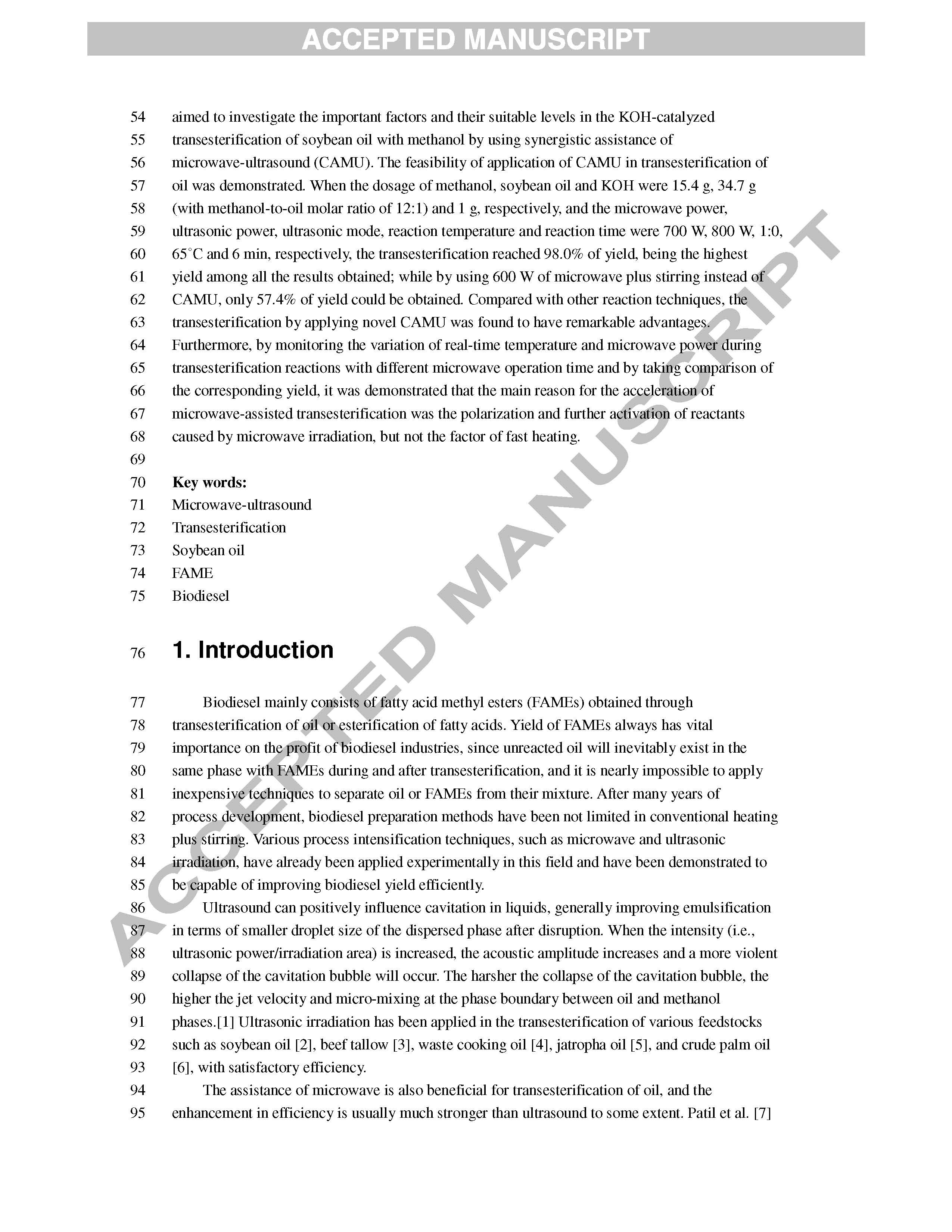
Fig.3/4↑
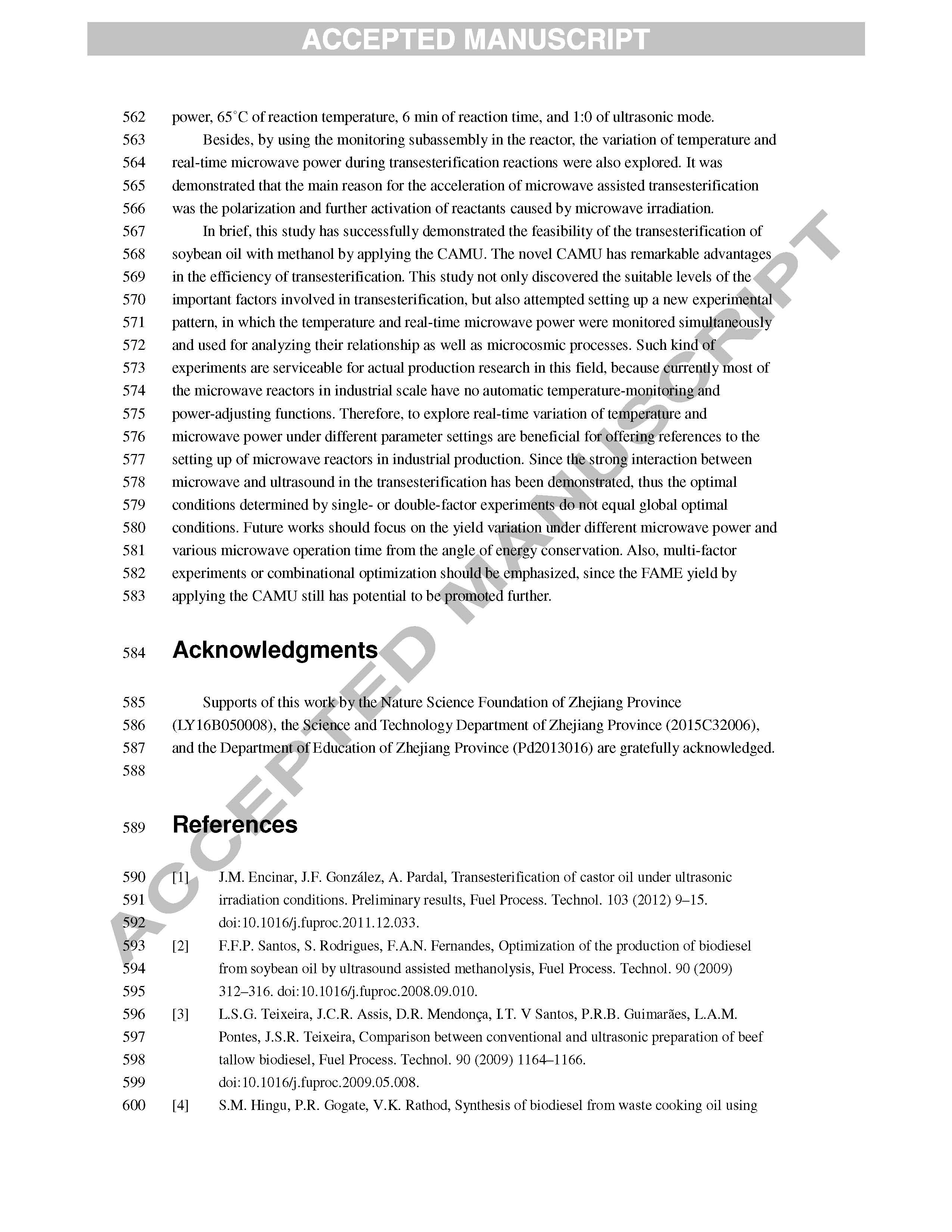
Fig.4/4↑
In this study, transesterification of soybean oil by using the CAMU was reported. Important parameters such as microwave and ultrasonic power, methanol-to-oil molar ratio, and catalyst amount on transesterification were investigated. The CAMU showed distinct advantages to traditional transesterification techniques. The results indicated that there existed interactions among their influences to FAME yield, especially for microwave and ultrasonic power. Under moderate ultrasonic power, ultrasonic mode 1:0 was superior to the other two modes. 800 W of ultrasonic power, 600-700 W of microwave power, 12:1 of methanol-to-oil molar ratio, 3 wt.% of KOH amount were suitable levels of the main parameters. The highest FAME yield of 98.0% was obtained when the conditions applied were 800 W of ultrasonic power, 700 W of microwave power, 65°C of reaction temperature, 6 min of reaction time, and 1:0 of ultrasonic mode. Besides, by using the monitoring subassembly in the reactor, the variation of temperature and real-time microwave power during transesterification reactions were also explored. It was demonstrated that the main reason for the acceleration of microwave assisted transesterification was the polarization and further activation of reactants caused by microwave irradiation. In brief, this study has successfully demonstrated the feasibility of the transesterification of soybean oil with methanol by applying the CAMU. The novel CAMU has remarkable advantages in the efficiency of transesterification. This study not only discovered the suitable levels of the important factors involved in transesterification, but also attempted setting up a new experimental pattern, in which the temperature and real-time microwave power were monitored simultaneously and used for analyzing their relationship as well as microcosmic processes. Such kind of experiments are serviceable for actual production research in this field, because currently most of the microwave reactors in industrial scale have no automatic temperature-monitoring and power-adjusting functions. Therefore, to explore real-time variation of temperature and microwave power under different parameter settings are beneficial for offering references to the setting up of microwave reactors in industrial production. Since the strong interaction between microwave and ultrasound in the transesterification has been demonstrated, thus the optimal conditions determined by single- or double-factor experiments do not equal global optimal conditions. Future works should focus on the yield variation under different microwave power and various microwave operation time from the angle of energy conservation. Also, multi-factor experiments or combinational optimization should be emphasized, since the FAME yield by applying the CAMU still has potential to be promoted further.
The microwave-ultrasonic reactor, Xianghu Instrument Combined Microwave-Ultrasound with Computer Controlled System for Synthesis and Solvent Extraction (model: XH-300A) with the dimensions of 450 cm × 670 cm × 650 cm, was purchased from Beijing Xianghu Science and Technology Development Co., Ltd.(Beijing, China). In this reactor, there was a specific cladding material on the surface of the ultrasonic horn to prevent the formation of electric arc. The ultrasonic horn can produce ultrasound with a frequency of 25 kHz.








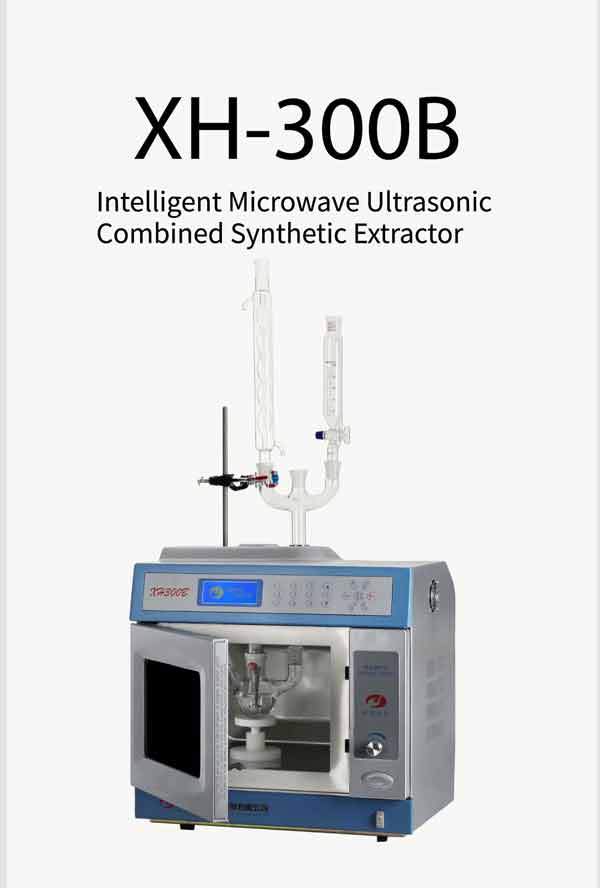

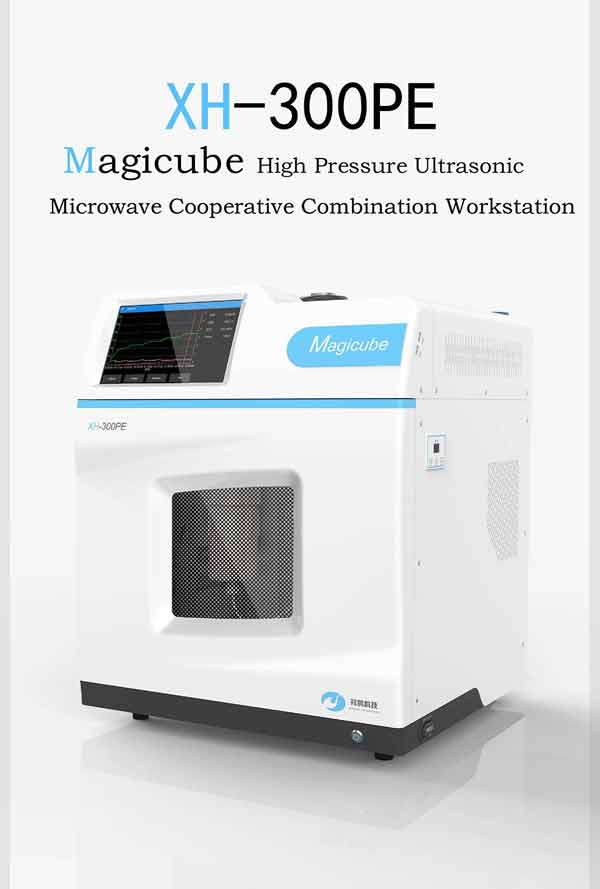
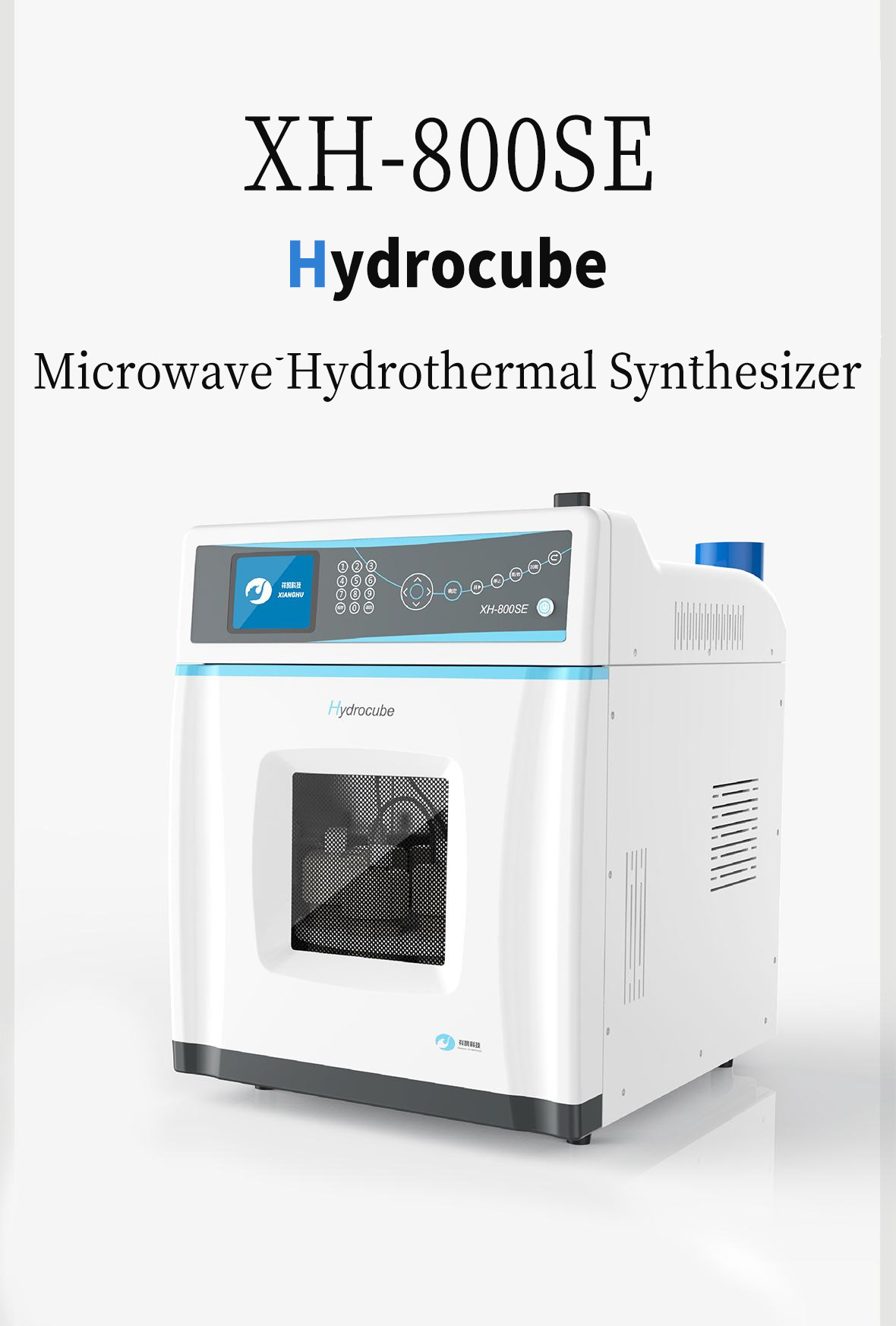
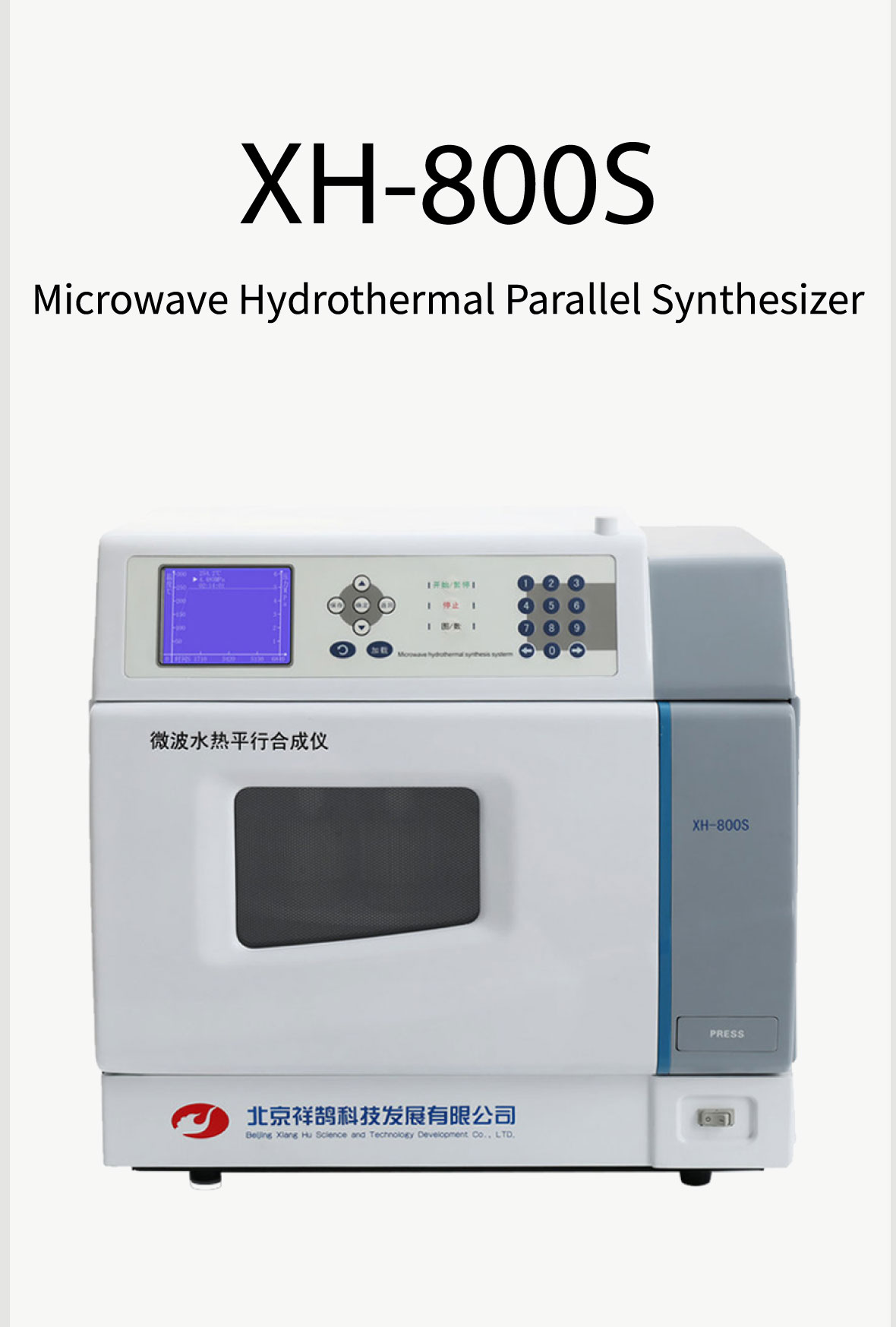
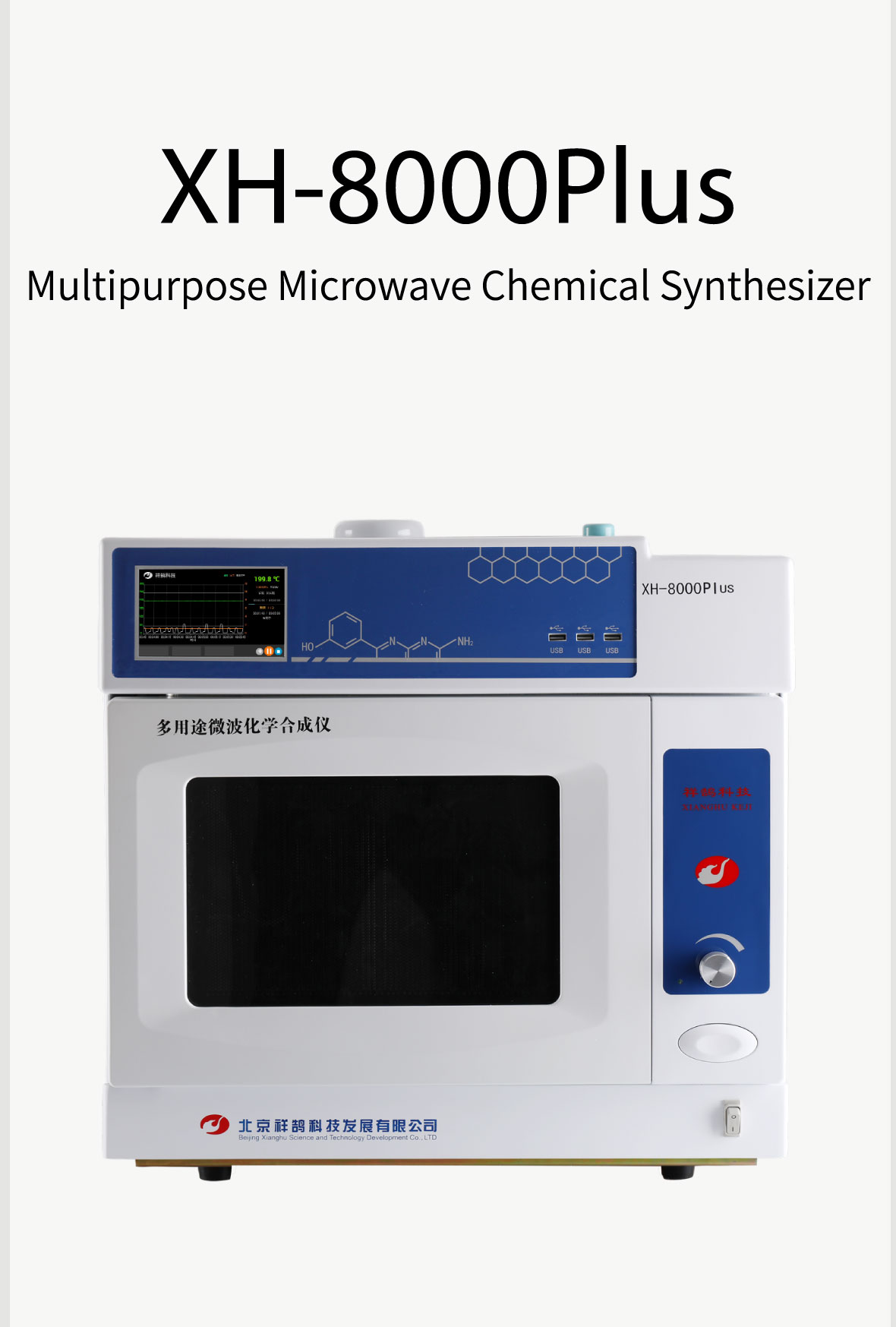
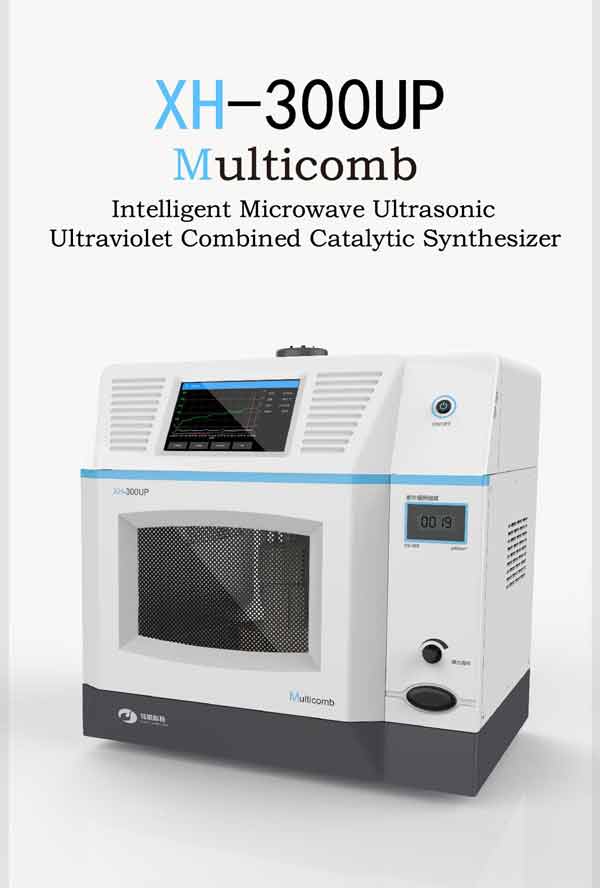
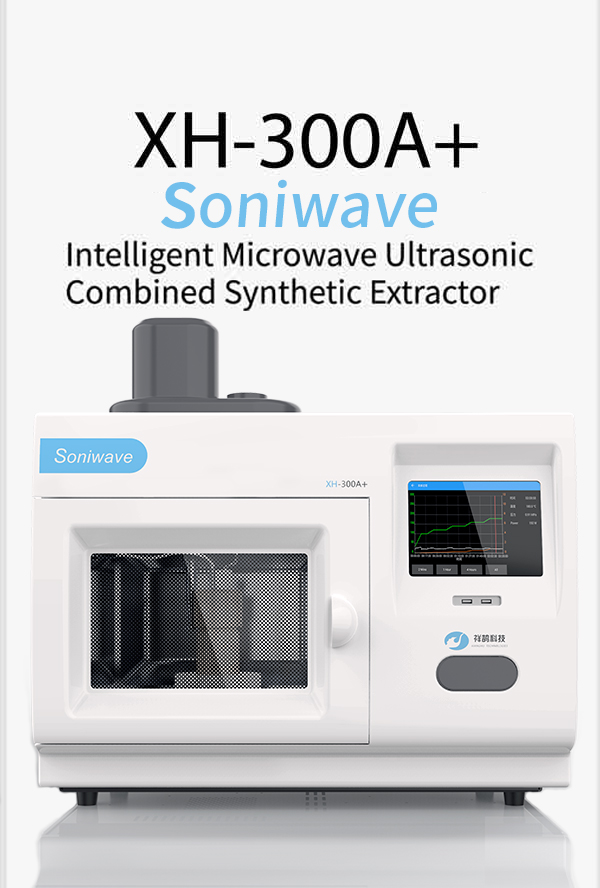

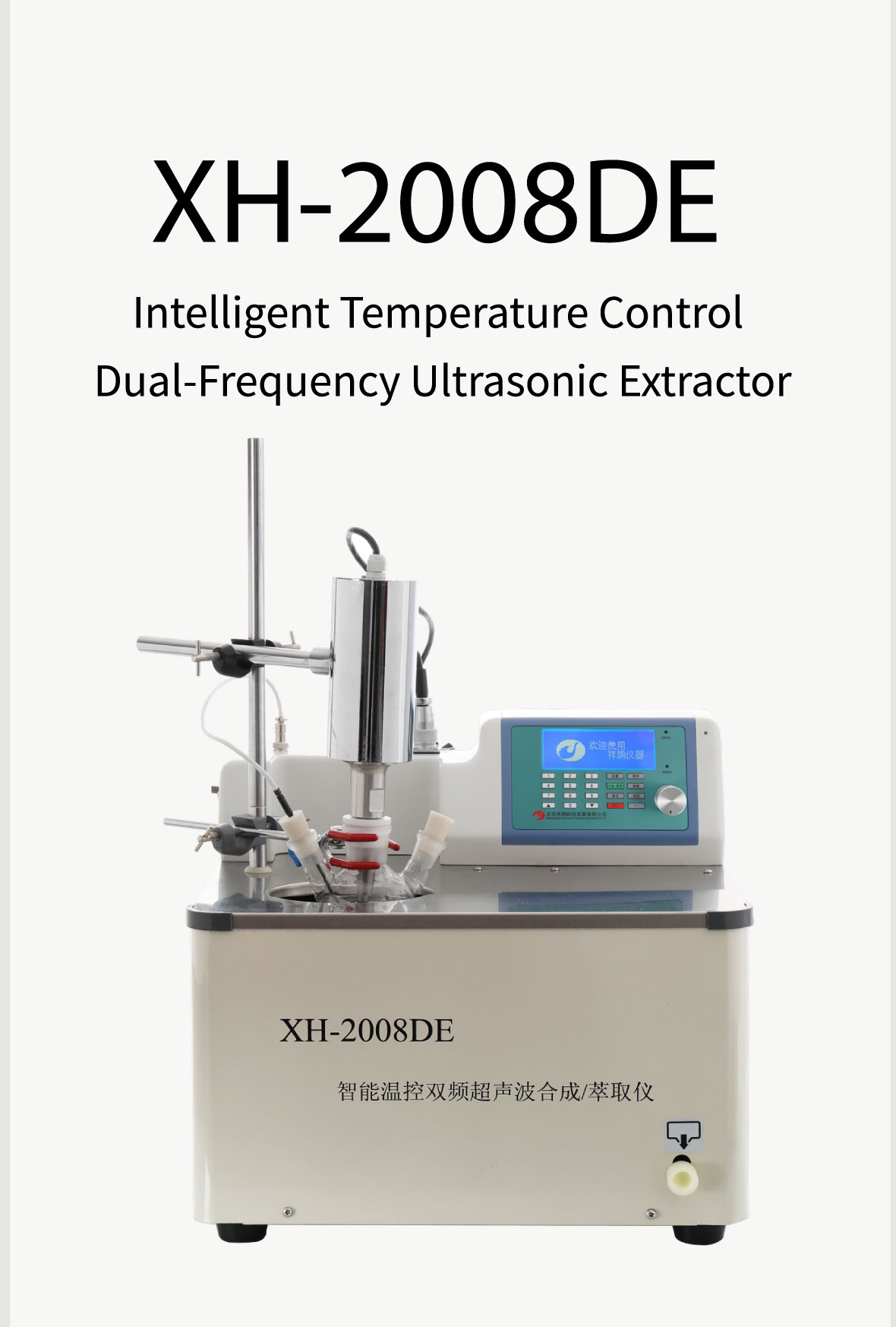



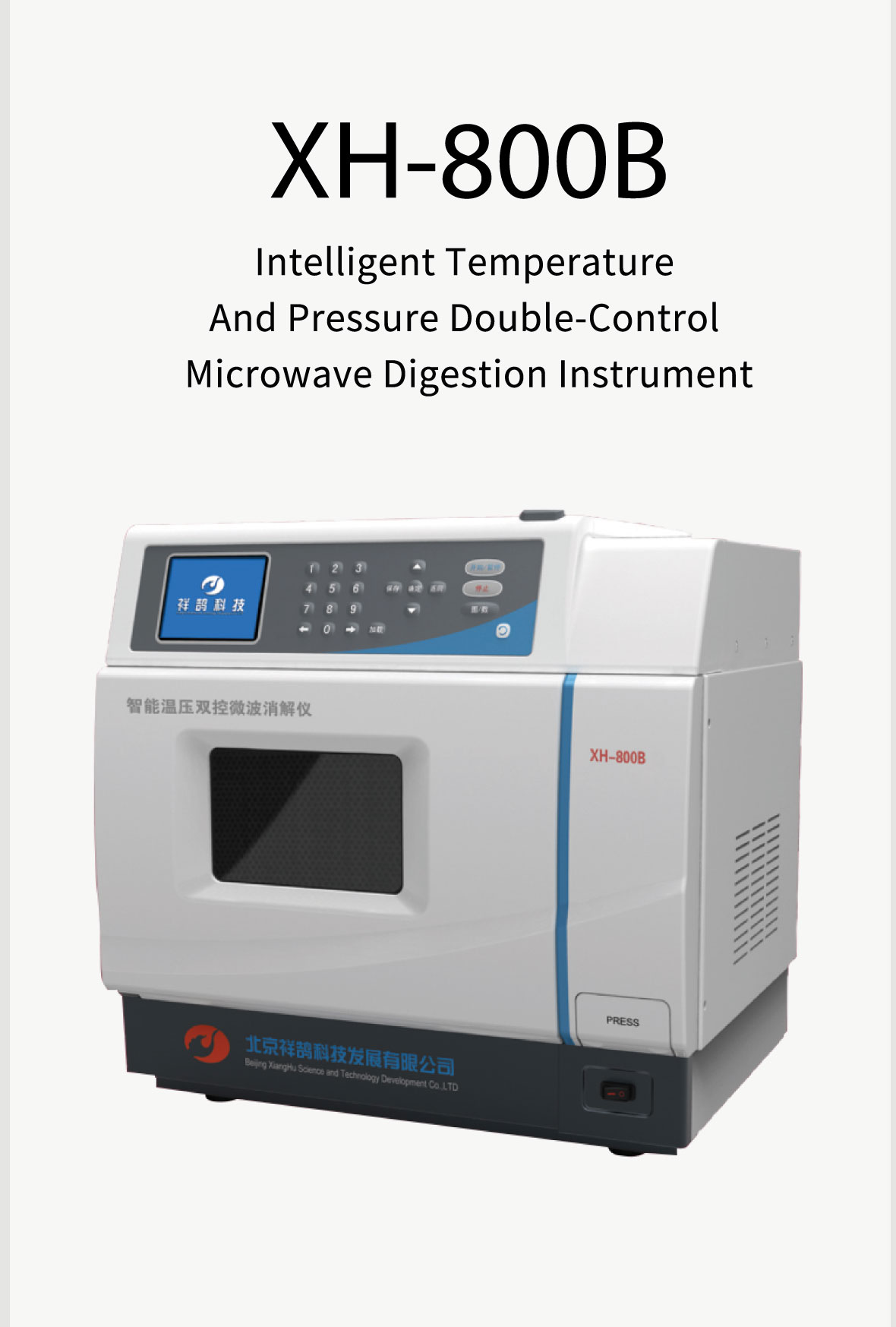

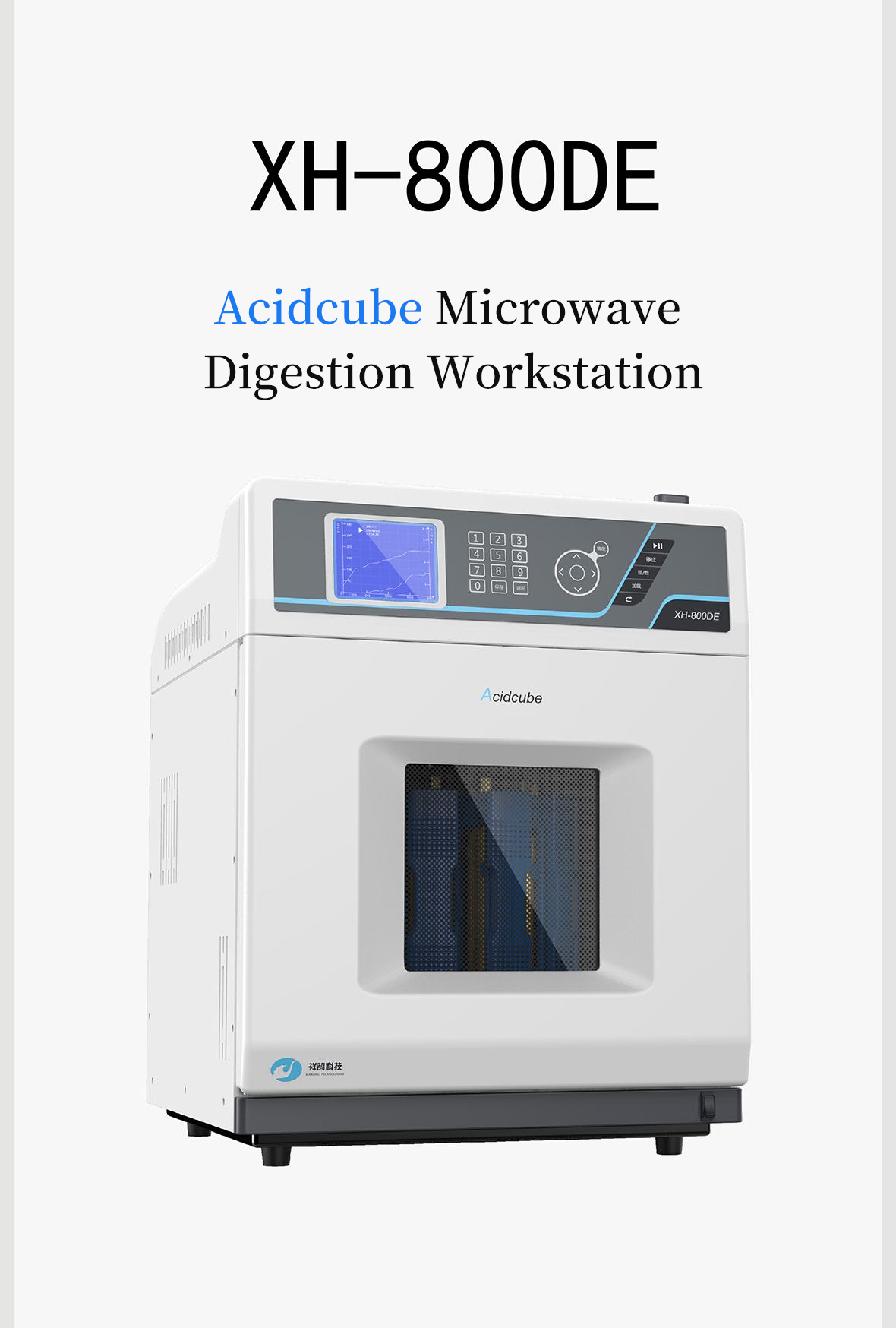

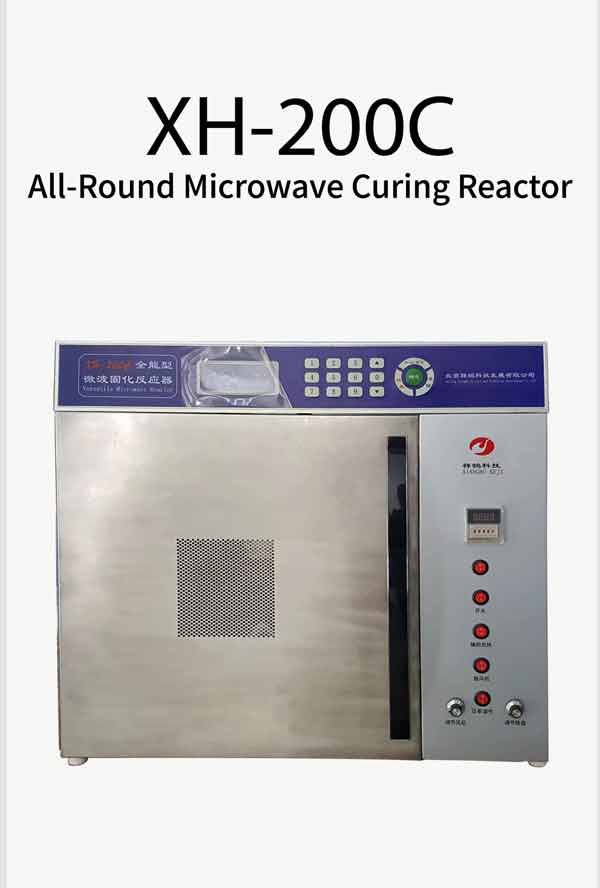
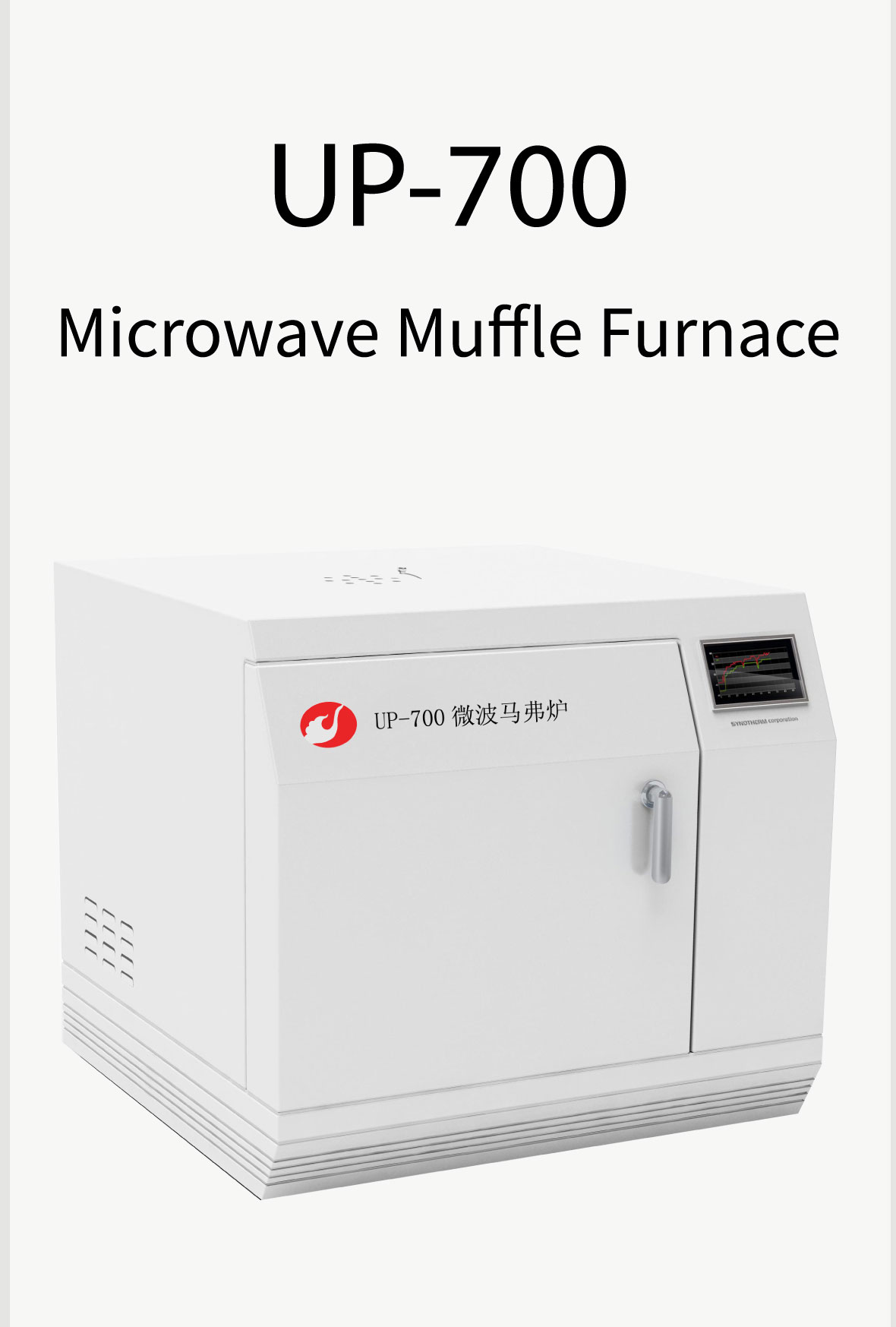

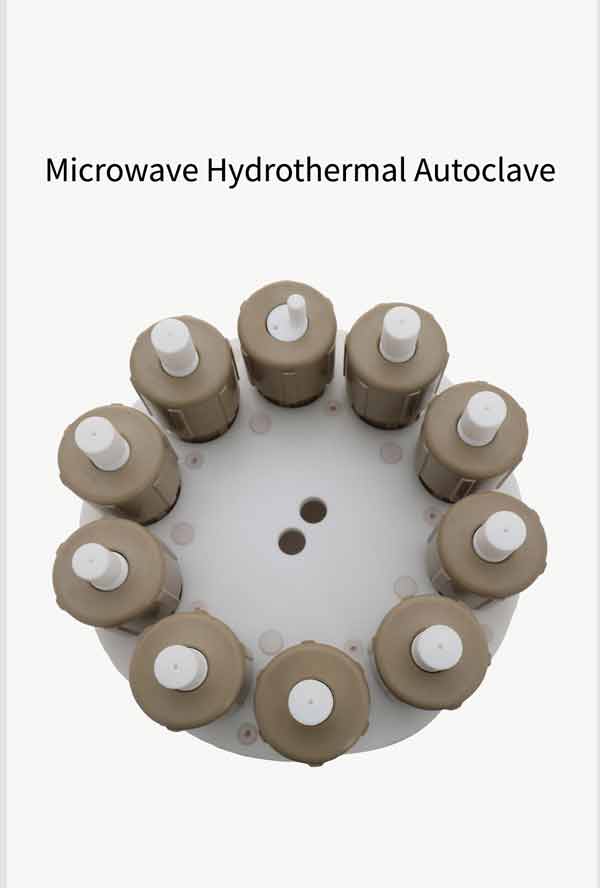



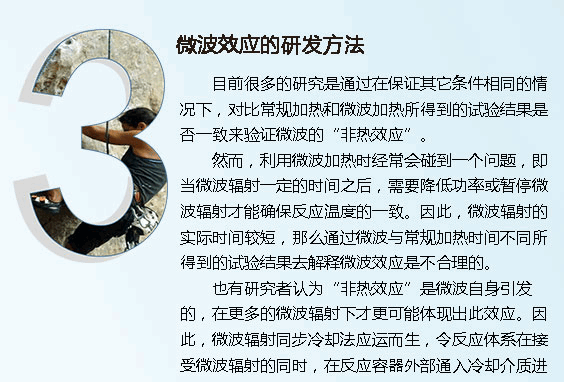
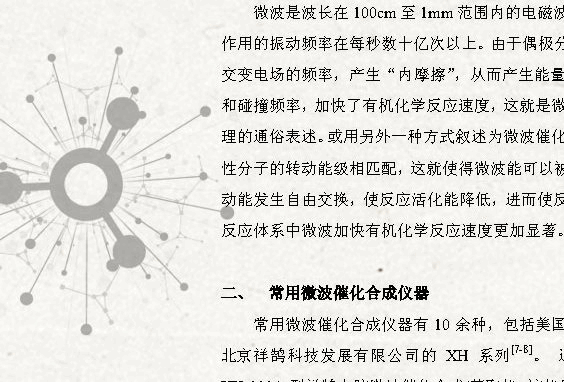

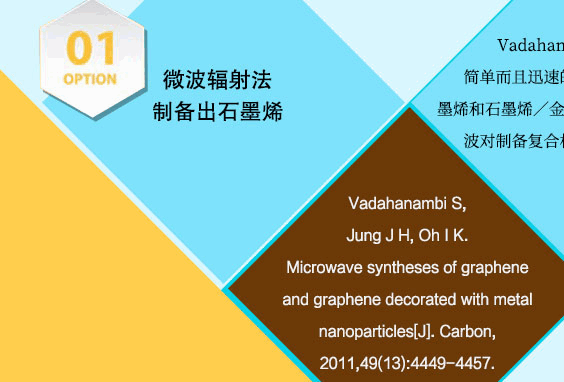



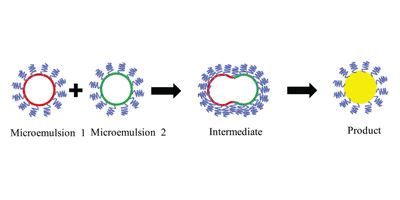
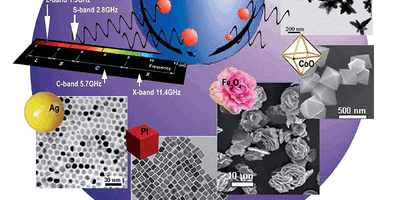
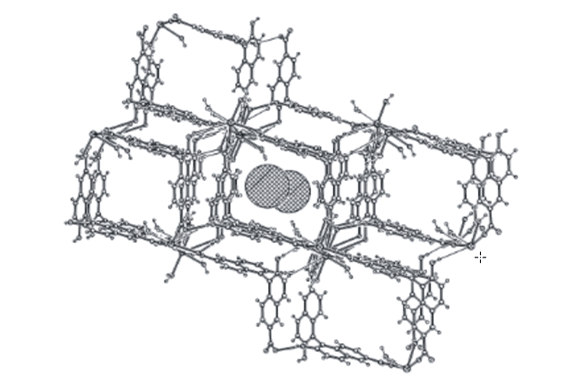
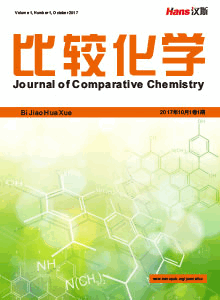
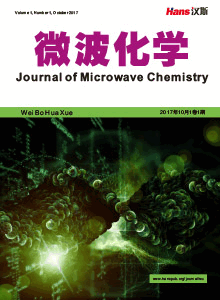
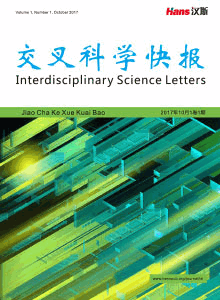




 京ICP备15050585号
京ICP备15050585号

